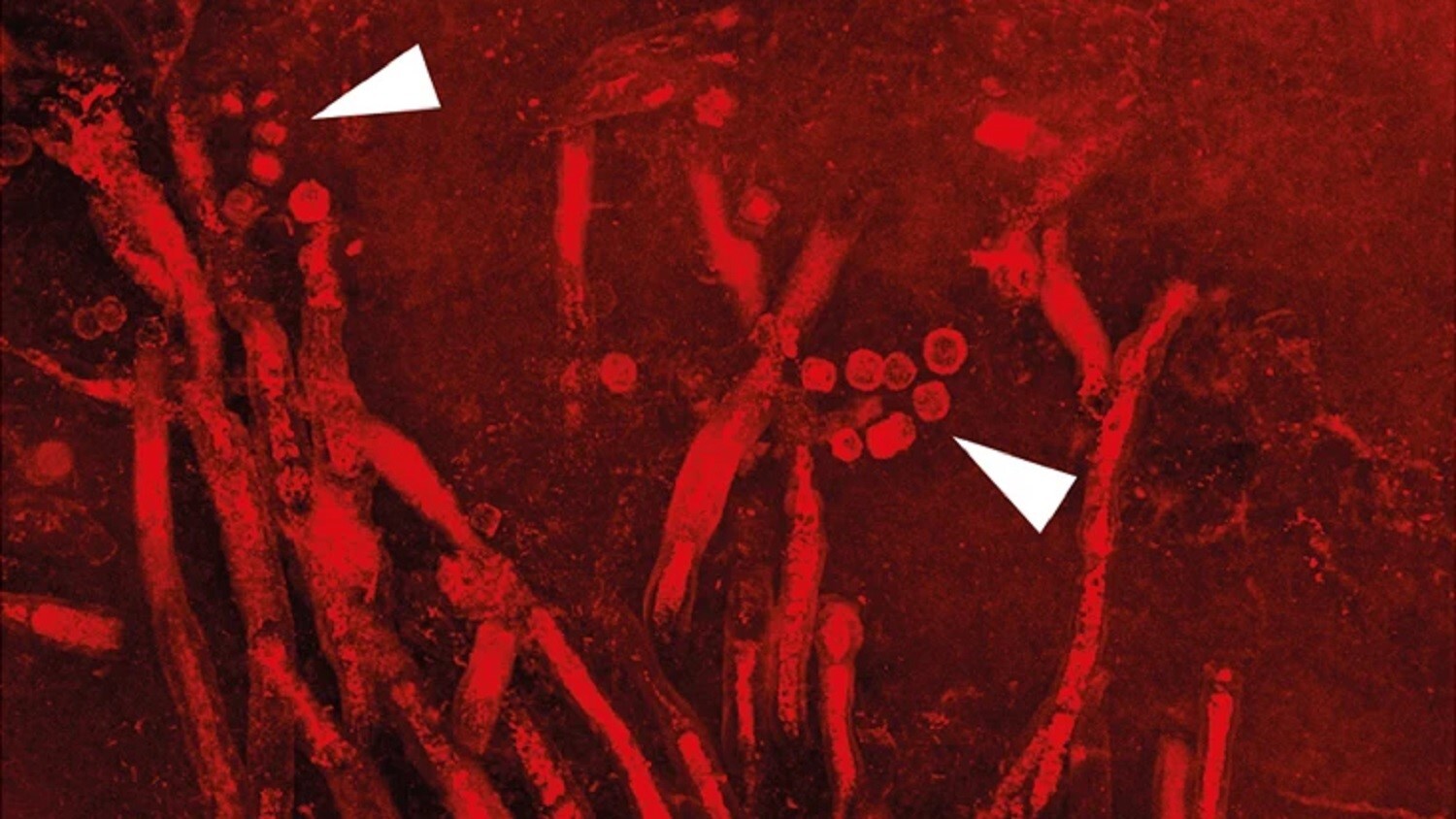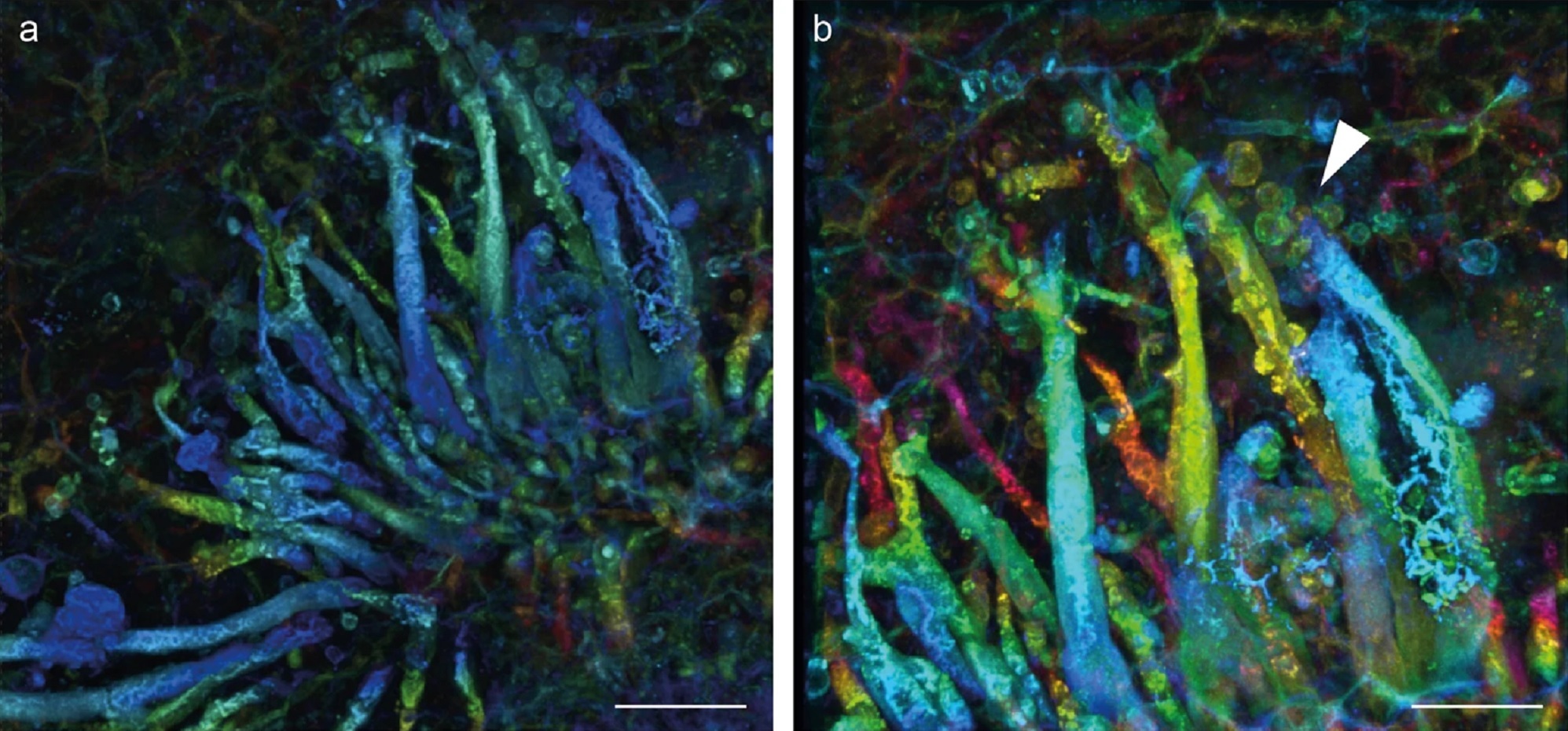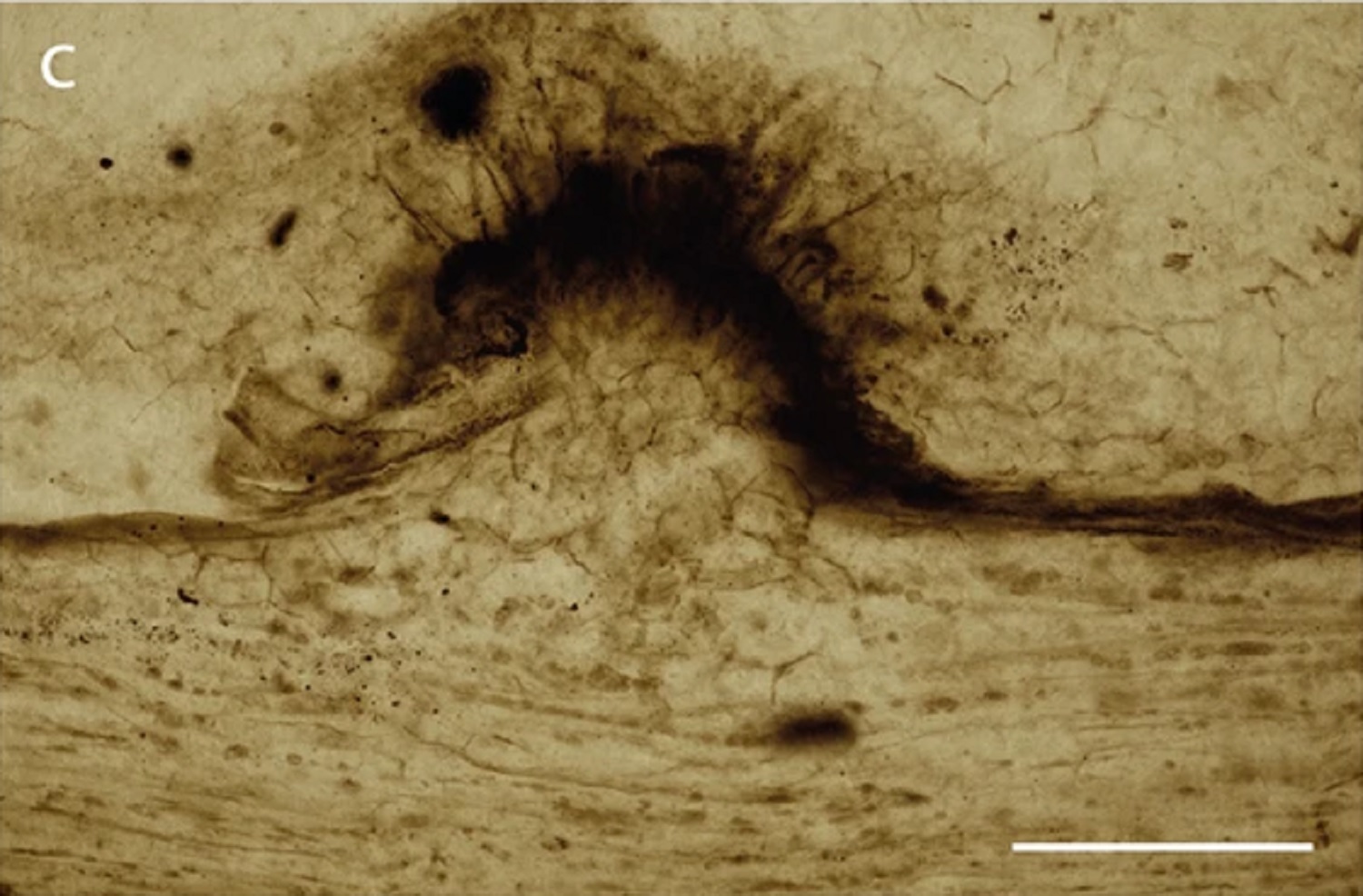
The oldest disease-causing fungus ever found has been discovered within a museum's fossil collections.
Estimated to be 407 million years old, the newfound fungal plant pathogen, named Potteromyces asteroxylicola, is a filamentous fungus — a type of fungi commonly associated with infections.
The parasitic fungus was found growing in an ancient plant called Asteroxylon mackiei in a specimen held at the Natural History Museum in London. The newfound fungus had burst through the plant's outer wall, killing its host's cells and absorbing its nutrients.
The plant appeared to have developed dome-shaped growths in response to the fungus, which researchers said indicate that it was alive while the fungus was attacking.

This is the earliest recorded evidence of a fungal parasite causing disease in a plant. The researchers described their findings in a new study, published Dec. 1 in the journal Nature Communications.
While analyzing plant samples under a confocal microscope to create a 3D image, researchers realized one slide at the Natural History Museum London contained what appeared to be a never-before-seen fungus.
Related: Horrifying photo captures moment parasitic fungus bursts from huge spider's body
However, because the appearance of fungi can differ between individuals, it wasn't until another specimen was found that the team was able to confirm it was a new species.
The second specimen was found in the National Museums Scotland collection. "Working on fossil fungi is not like working on dinosaurs," lead study author Christine Strullu-Derrien, a paleontologist at Natural History Museum London, said in a statement. "When you find a dinosaur, an individual can be described as a new species, but for fungi you have to find more than one to be really confident you have something unique. I found the first Potteromyces specimen in 2015, but it took years until I discovered another so that I could describe it."

Fossil samples housed in both museums were taken from the Rhynie Chert, a layer of rocks that contains preserved plants, bacteria and fungi, as well as animals from the Early Devonian period (419 million to 313 million years ago). The site in Scotland is regarded as vital in understanding the early evolution of plants and associated fungi.
A diverse range of fungal-plant interactions are known to have taken place in early terrestrial ecosystems, and this latest evidence further extends what is known about fungal species.
"Although other fungal parasites have been found in this area before, this is the first case of one causing disease in a plant," Strullu-Derrien said. "What's more, Potteromyces can provide a valuable point from which to date the evolution of different fungus groups, such as Ascomycota, the largest fungal phylum."
The fungus' genus is named after children's writer and mycologist Beatrix Potter, who is better known as the author of "The Tale of Peter Rabbit" (1901). Potter's detailed illustrations of fungi and study of their growth were in some cases decades ahead of scientific research at the time, according to the statement.







